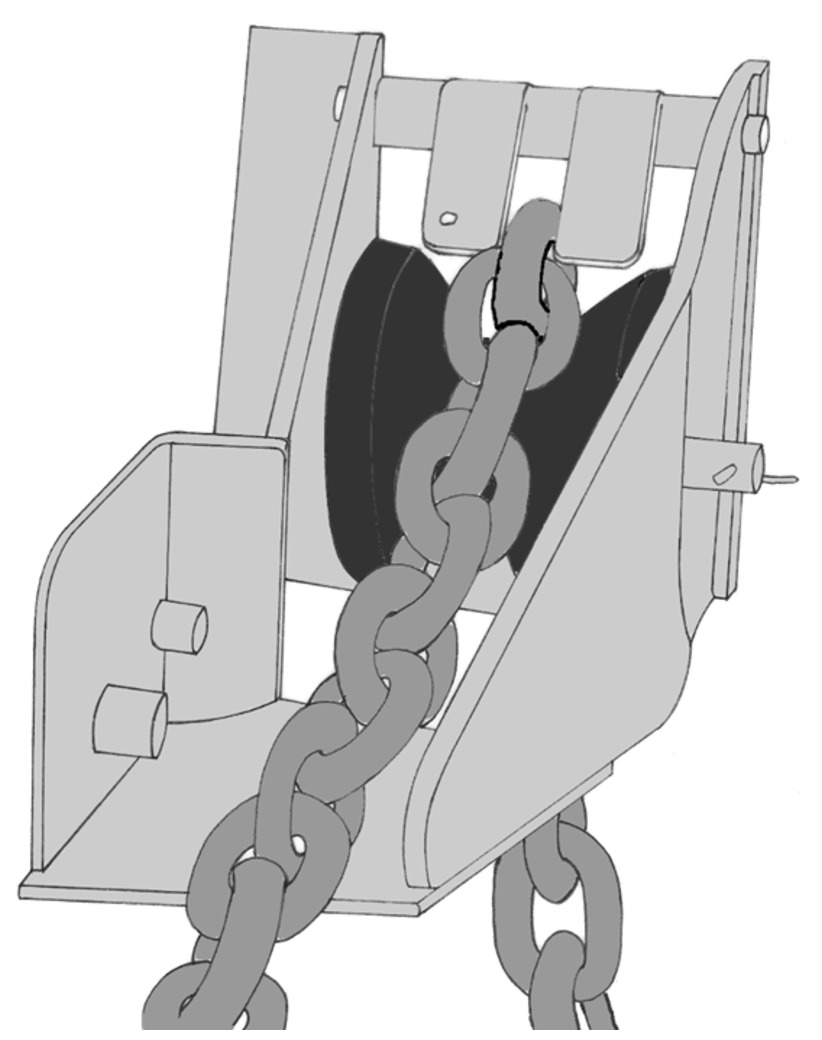
What is the issue?
The anchor chain can be very hard on the hands, back and shoulders. When the chain is running out the chain has to be slowed and belayed, and as often as not, entirely by handwork around a chain post. Chain work cannot be escaped either with an anchor windlass as they are not designed to take the continual strain of laying to an anchor, the ground tackle has to be belayed to an appropriately designed strongpoint. If the vessel does not have the benefit of a windlass this work will be excessive.Why address this?
Working with chain is a heavy, punishing grind that takes its toll on your hands, back and shoulders. The human body is not the best means of chain control. Plus, when working under loads, it is easy to lose control of the chain so that it flies out and only adds work to retrieve it. If you, or one of your crew, are not physically strong they may find this chain work excessively challenging. Or if you are relying on a windlass, and it fails, it is going to be a very hard grind.How to address this?
Take the majority of the hard work out of the task by adding a chain pawl, or stopper, to the foredeck to add more control enabling more chain control. Standard anchor chain pawl or stopper
Standard anchor chain pawl or stopper Photo: Courtesy of Whitworths Marine & Leisure
Chain pawls are used to set and ride on the anchor, assist in retrieving the anchor, or to prevent an accidental free fall when setting one or whilst underway. Some pawls, like Hiscock’s, will fit right on the jaws of the bow roller and simply flip over when you want the chain to run out. Once implemented a chain pawl provides an on-demand ratchet for the anchor chain. A free-flowing chain can be immediately stopped and locked in place by simply flipping the pawl over and locking it in place.
 Anchor chain pawl or stopper on a bow roller
Anchor chain pawl or stopper on a bow rollerImage: Tony Gibson
If you do not have an anchor windlass, or your windlass has failed, it dramatically simplifies the task of pulling the chain up. You only haul in the chain when it goes slack, the pawl then holds the gain automatically when the chain loads up again. That means you only have to take in the slack and do not have to try to hang onto it when the bow rises. This not only removes the vast majority of the hard work but also provides a rest point until the slack comes onto the chain again. Removing the continuous belaying of each gain also eliminates the hand and shoulder work that only serves to slow the operation down. By doing this the pawl can significantly speed up anchor retrieval. Pawls work so well that it is generally believed that the make a windlass redundant on a boat of 30 feet in length or less.
A good chain pawl or stopper may be a little expensive to purchase and they are not common on modern production boats. But the investment could save you from a lot of hardship and some down the road physiotherapy bills to sort out some crushed vertebrae.
With thanks to:
Michael Harpur, Yacht Obsession.Add your review or comment:
Please log in to leave a review of this tip.
eOceanic makes no guarantee of the validity of this information, you must read our legal page. However, we ask you to help us increase accuracy. If you spot an inaccuracy or an omission on this page please contact us and we will be delighted to rectify it. Don't forget to help us by sharing your own experience.

